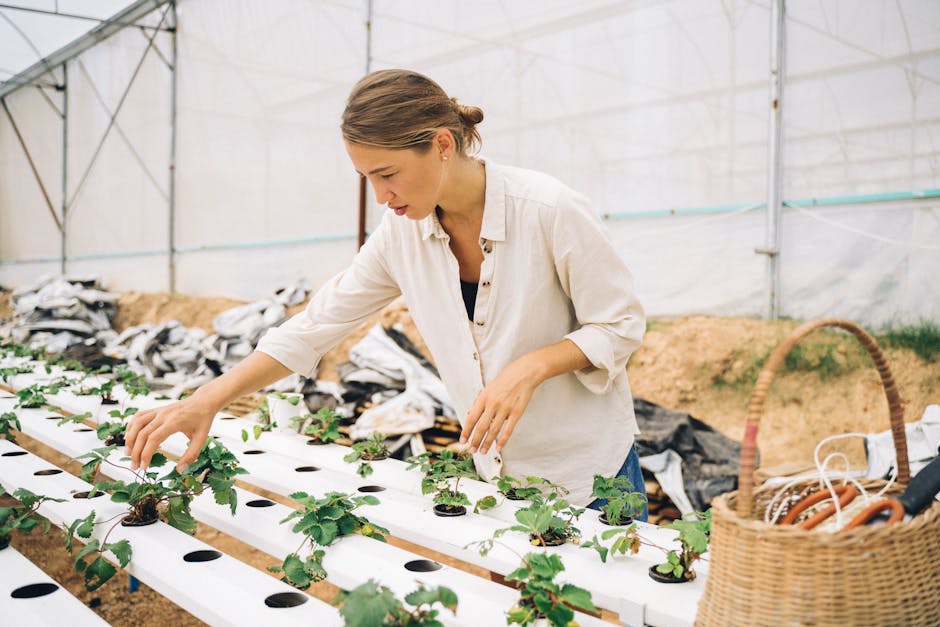Innovative Eco-Friendly Production Methods
Did you know that manufacturing is responsible for about 20% of global greenhouse gas emissions? As we face climate change, innovative eco-friendly production methods are emerging. These methods not only help the planet but can also save money and resources. Lets dive into how these solutions are changing industries for the better.
What Are Eco-Friendly Production Methods?

Eco-friendly production methods are techniques designed to reduce waste, conserve energy, and lower pollution. They focus on using sustainable materials and processes that are kinder to the Earth.
Think of it this way: just as you might recycle at home, companies can recycle and reuse materials in their production lines. This practice lessens the need for new raw materials and cuts down on waste.
Why Are Eco-Friendly Methods Important?

Eco-friendly methods are crucial for several reasons:
- Environmental Impact: They help reduce harmful emissions and pollution.
- Resource Conservation: They make better use of natural resources.
- Cost Savings: They can lower production costs over time.
According to a report by the World Economic Forum, companies that adopt eco-friendly practices can improve their efficiency by up to 30%. that’s a win-win for both the planet and the bottom line!
What Are Some Innovative Eco-Friendly Methods?

There are many innovative production methods out there. Here are a few that stand out:
1. 3D Printing
3D printing, also known as additive manufacturing, is changing how products are made. Instead of cutting materials down to size, it builds items layer by layer. This method wastes less material and allows for the use of recycled plastics.
Example: Companies like Adidas are using 3D printing to create shoe components from recycled ocean plastic. This way, they not only produce less waste, but they also help clean up our oceans.
2. Upcycling
Upcycling takes old products and transforms them into something new and valuable. This method reduces the need for new materials.
Example: A company might take discarded denim and turn it into stylish bags. This not only keeps waste out of landfills but also creates unique fashion items.
3. Biodegradable Materials
Using biodegradable materials is another great approach. These materials break down naturally, reducing waste in landfills.
Example: Some companies are now using plant-based plastics for packaging. These plastics decompose much faster than traditional ones, helping to protect the environment.
4. Energy-Efficient Machinery
Investing in energy-efficient machinery can drastically cut down energy consumption. Many modern machines are designed to use less power while maintaining high productivity.
Example: A factory might replace older machines with newer models that use up to 50% less energy.
How Do Companies Implement These Methods?

Many companies start by auditing their production processes. They look for areas where they can reduce waste or energy use. Once they identify these areas, they can implement new methods.
For instance, a clothing company might analyze it’s fabric usage. By finding ways to eliminate scraps, they can minimize waste and lower costs.
What Are the Challenges?
While innovative eco-friendly production methods offer many benefits, they also come with challenges:
- Initial Costs: Upgrading to eco-friendly methods can be expensive upfront.
- Training Requirements: Employees may need training to adapt to new processes.
- Supply Chain Adjustments: Sourcing sustainable materials can be challenging.
However, many companies find that the long-term savings outweigh these initial hurdles. With growing consumer demand for sustainable products, it’s becoming easier to justify these investments.
How Can Consumers Support Eco-Friendly Production?
Consumers play a vital role in promoting eco-friendly production. Here are ways you can help:
- Choose Sustainable Brands: Look for companies that prioritize eco-friendly practices.
- Reduce, Reuse, Recycle: Follow these principles in your daily life.
- Spread Awareness: Share information about sustainable practices with friends and family.
By making informed choices, consumers can encourage more companies to adopt eco-friendly methods.
what’s Next for Eco-Friendly Production?
As technology advances, we can expect even more innovative eco-friendly production methods to emerge. Companies are investing in research to create new materials and processes that are both efficient and sustainable.
For instance, scientists are exploring the use of fungi to create eco-friendly packaging. This could be a game-changer in reducing plastic waste.
Final Thoughts: The Future is Green
The shift to eco-friendly production methods is essential for a sustainable future. Not only do these methods protect our planet, but they also offer economic benefits. As consumers, we can all contribute to this positive change. By supporting sustainable practices, we help build a greener, healthier world.
For more information on eco-friendly practices, check out the World Wildlife Fund. Learn how businesses and consumers alike can make a difference.
Remember, every small action counts. Lets work together for a sustainable future!



